
This past weekend saw Britain’s finest hill climbers congregate in the town of Ambleside to launch themselves up a rather famous climb called “The Struggle”. We wrote a segment analysis here as well as a piece with pacing advice here (which I completely ignored and went out way too hard but that’s a story for another day).
In the men’s race, the big showdown was between Ed Laverack and Andrew Feather, where Feather came out on top taking 18s on Laverack. Both riders put out amazing performances being well in excess of 7W/kg for the climb. 18s is a bigger margin than people expected from talking to riders and fans on Sunday and, based on how important pacing is on rolling climbs like this, we thought it would be interesting to look into where Feather made the time up on Ed Laverack.
Where was the time gained?
In order to do this, we will make use of Strava segments. The Struggle has a series of sectors and is a rolling climb (in the sense that there’s a reasonable amount of descending involved along the way) and the segments we will use are ‘3 min’, ‘National HC sector 1- (no flat)’, ‘Struggle… sec2..the kind of flat bit!’, ‘Struggle Climb Descent’ and ‘Struggle To The Line’. Broadly speaking these segments represent the steep start, the flattish rolling bit in the middle, the descent and the final wall.
We will look at the progress of four riders, Feather, Laverack, Gabe Dellar and me. These represent two great hill climbers, a very powerful cyclist who is not a hill climb specialist and an 80kg triathlete who’s just spent a week off the bike due to the off-season.
‘3 min’
This is the first segment, it’s just shy of 700m long with an average gradient of 12.7% and it gives us a good idea of who started the hardest.
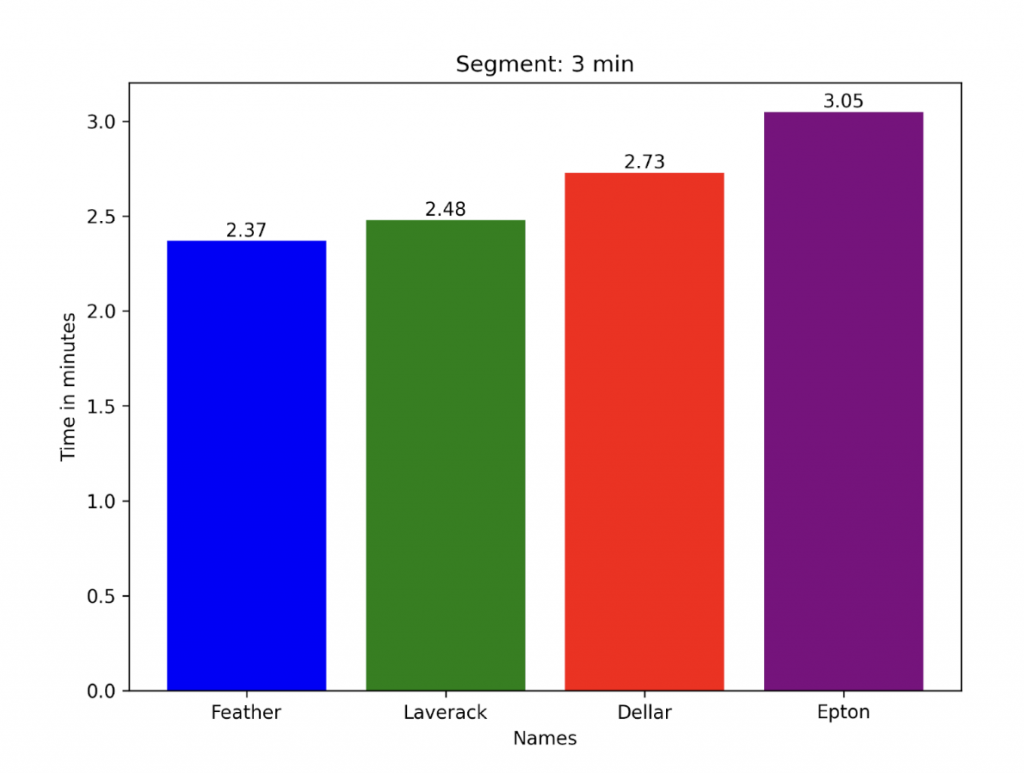
‘National HC sector 1- (no flat)’
This sector includes the one featured above but extends further to 2.38km with an average gradient of 10.8%.
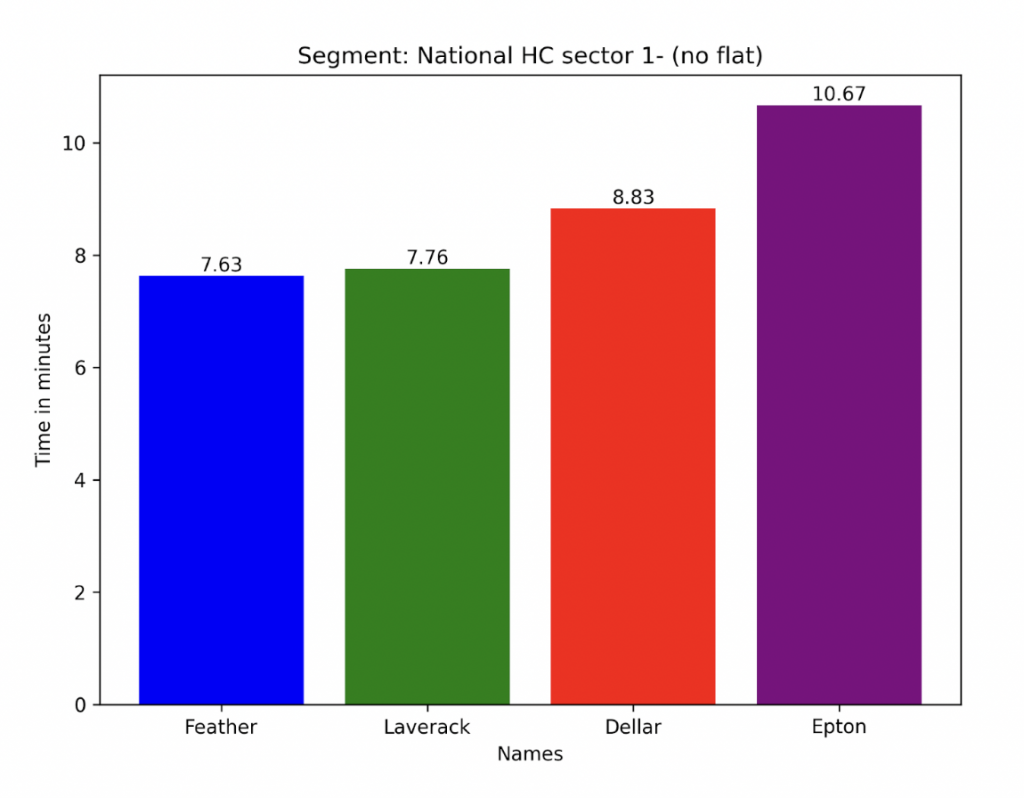
‘Struggle… sec2..the kind of flat bit!’
This is the most interesting segment to see the time gaps as it will show the differences in pacing strategies being employed.
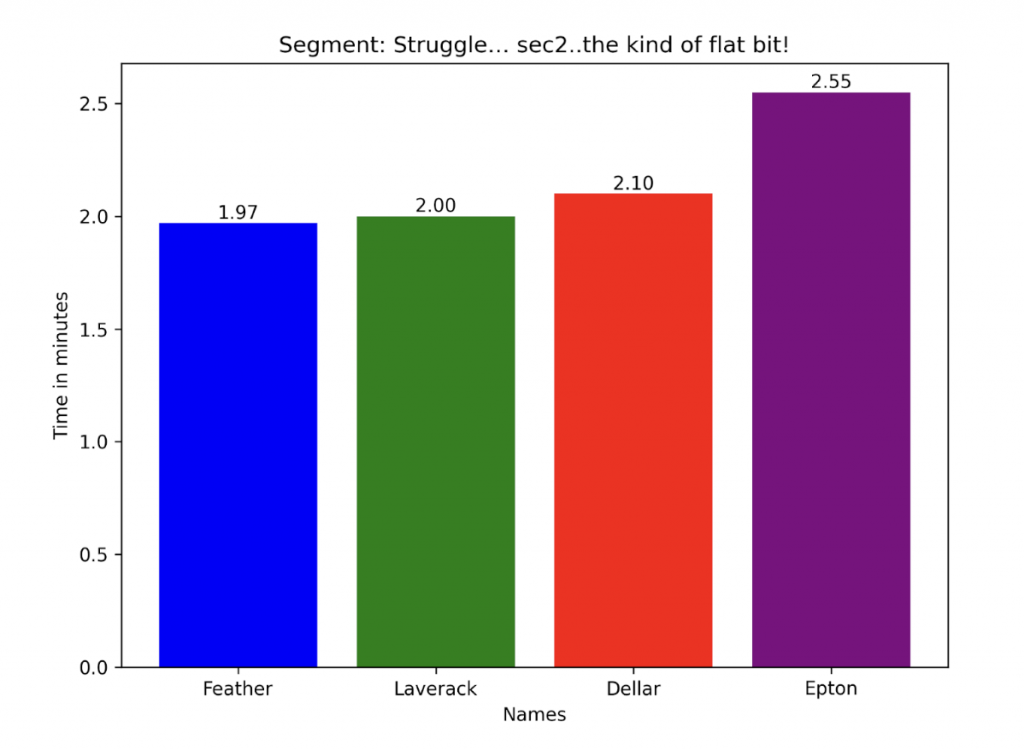
‘Struggle Climb Descent’
This segment tells us who’s been doing their research and riding the course first. There was no need to touch the brakes on this descent portion of the course and riders who had done the climb a couple of times would know this.
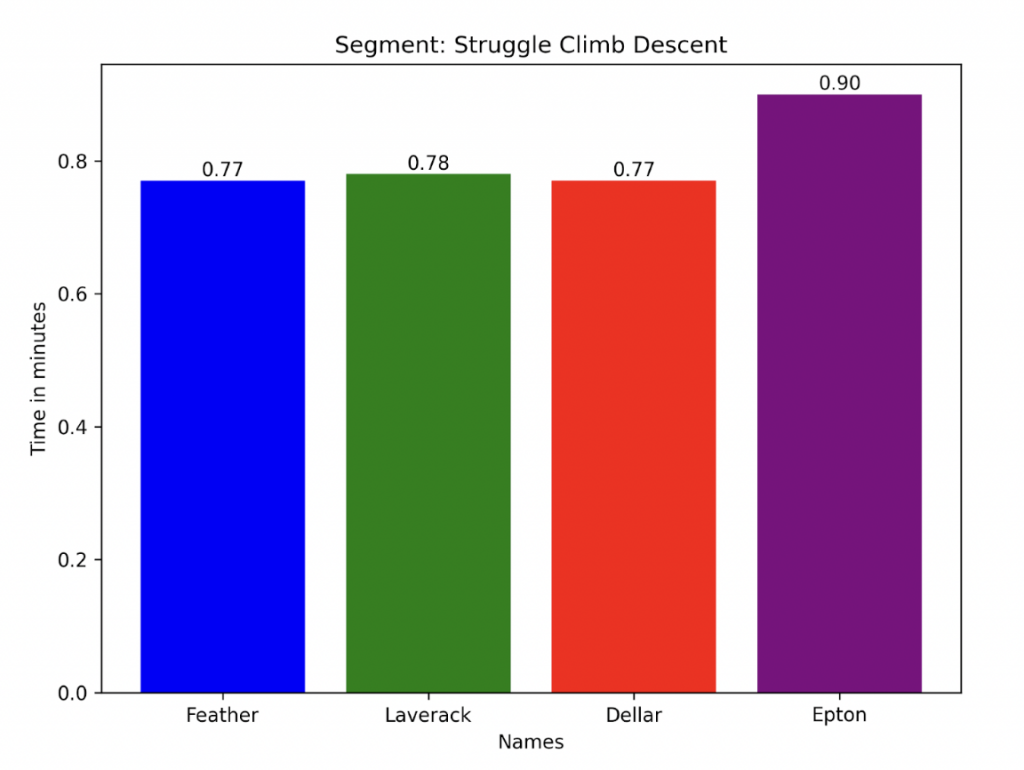
‘Struggle to the line’
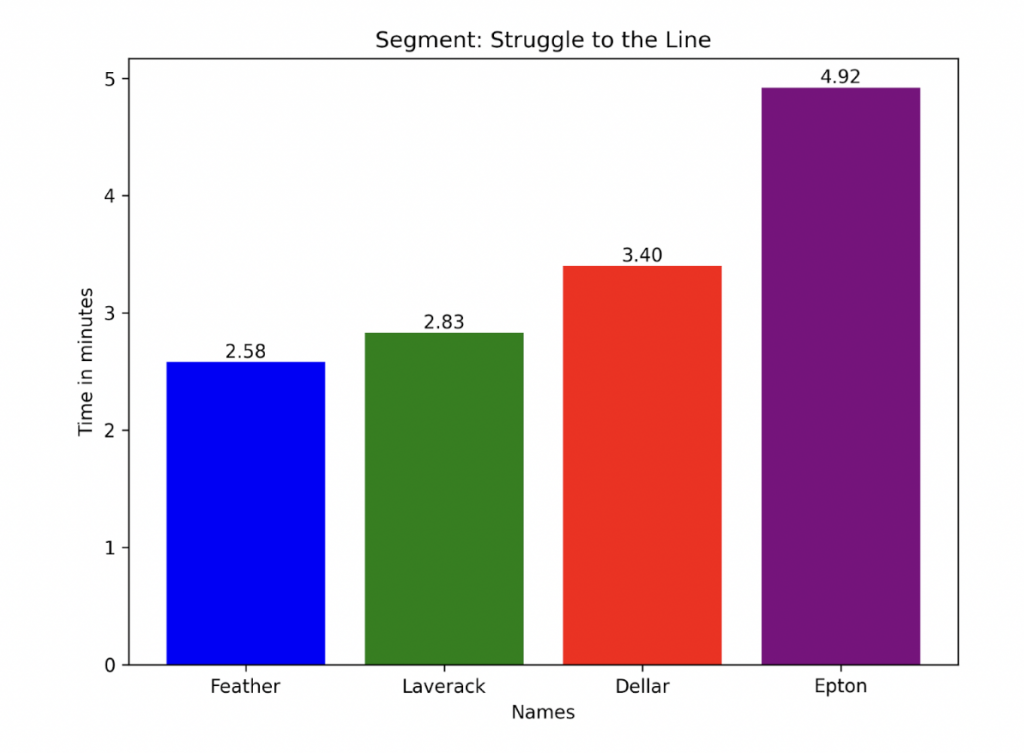
Could Ed Laverack have won and a brief discussion about the model of Critical Power?
The critical power model would have Laverack and Feather with similar CP values and Feather with a larger W’.
What this essentially means is that both Feather and Laverack have similar aerobic capacity but Feather has a greater access to glycolytic power. The question becomes how does Laverack win on a climb which is essentially made for Feather? The only path I see is for him to pace it harder at the start and descend faster with more focus on aerodynamics for the flat bit. The reality is, given Feather’s physiology, Laverack may have been fighting a losing battle though.
The critical power model is a valuable tool for assessing sustainable power output, but it has several limitations. One key limitation is that it assumes a linear relationship between power output and duration, which may not accurately represent the nonlinear nature of fatigue. In reality, fatigue can accumulate at different rates depending on various factors such as intensity, environmental conditions, and individual variability. The model also simplifies the complex interplay between aerobic and anaerobic energy systems, making it less precise for athletes with varying strengths in these systems. It’s probably the case that Andrew Feather is such an outlier and the CP model underestimates his ability to produce high powers.
Next time, we will go through Illi Gardner’s performance that won her the women’s British Hill Climb championships. If you want to plan your next race with the precision of the best riders in the world, head here and sign up to myWindsock.




 UK Time Trial Events
UK Time Trial Events